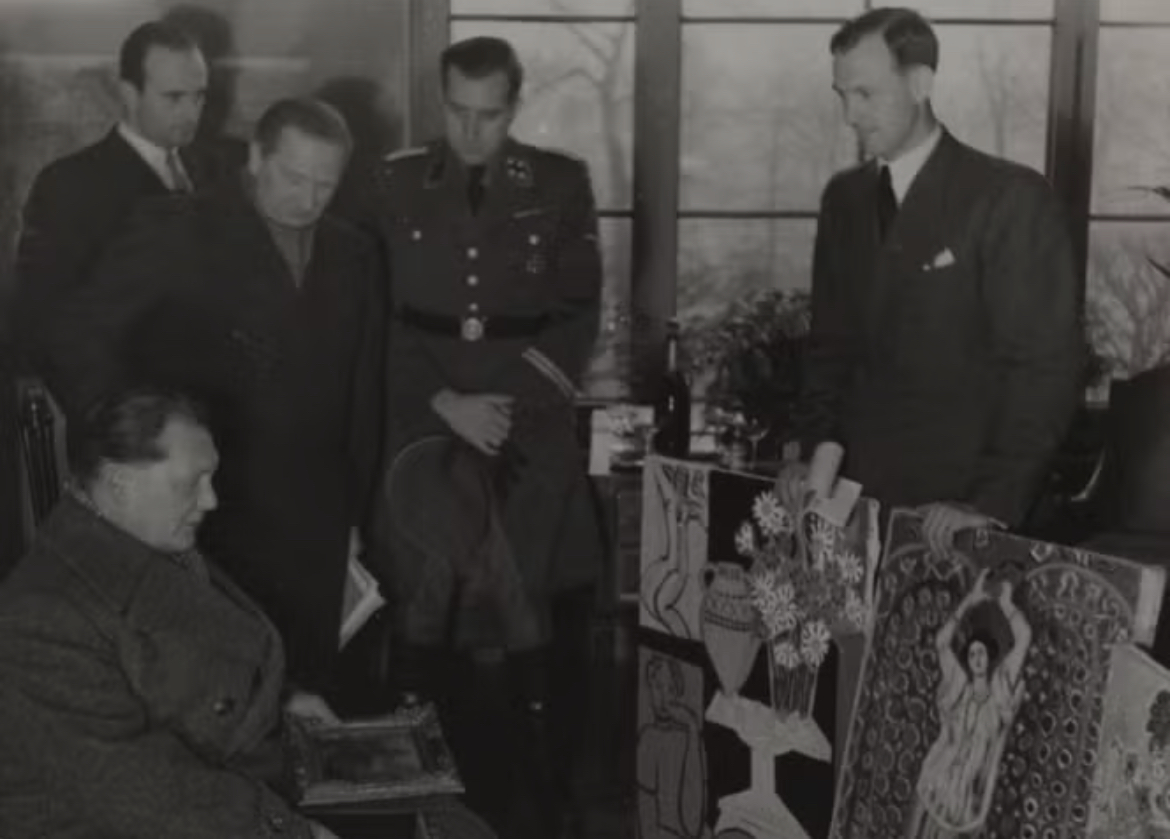

Matisse at War. Art and Resistance in Nazi Occupied France
Book talk by Christopher C. Gorham
October 22, 2025 @ 12:00 pm - 1:00 pm
| FreeIn this book talk, author Christopher C. Gorham speaks about the artist Henri Matisse (1869-1954) and his steadfastness to live and work during the years of World War II and the Nazi occupation of France.
When the Degenerate Art exbibit opened in Munich in the summer of 1937, works by notable foreign modernists were denigrated along with German artists. Henri Matisse’s Blue Window (1913) was legally seized by the Nazi regime for inclusion in the traveling exhibit, and his work was banned from German museums.

Henri Matisse was among the modernists derided by the Nazis. That did not stop them from stealing his art. At the Jeu de Paume Museum, Paris, Dec. 2, 1941 Reichsmarschall Hermann Göring (seated, lower left) ogles two paintings by Henri Matisse and stolen from dealer Paul Rosenberg. Archives des Musées Nationaux.

Even in poor health during the Occupation, Henri Matisse was driven to create. Here, he sits in bed at Hôtel Régina in September 1942 with his brushes in hand. © André Ostier, 2025. All rights reserved
Matisse continued to be an enemy of the Third Reich following Germany’s subjugation of France in 1940. Despite entreaties to flee France, Matisse defiantly remained. But decades of his work were at risk: his personal collection was safeguarded in a Paris bank vault but subject to German “removal men.” One such removal man was Reichsmarschall Hermann Göring, Nazi Germany’s second-in-command, who took possession of several Matisse works which he had “carefully vetted.”

Poet Louis Aragon, a friend of Matisse, said that the star-shapes in The Fall of Icarus stood for “bursting shells.” Archives Henri Matisse, all rights reserved. © 2025 Succession H. Matisse /Artists Rights Society (ARS), New York.

To many wartime observers, Matisse’s cut-out Monsieur Loyal resembled the profile of General Charles de Gaulle. © 2025 Succession H. Matisse / Artists Rights Society (ARS), New York.
The stakes were high for Matisse, but even higher for his children. His son Jean was aiding British intelligence in the South; his son Pierre was helping artists like Marc Chagall escape to New York; and his beloved daughter Marguerite ferried intelligence for a Resistance network. Despite his anxiety over the fate of his family, Matisse persevered in his art, creating a groundbreaking series of images he called Jazz (another so-called “degenerate” artform). Henri Matisse’s steadfastness to live and work during the years of war and Occupation made the white-haired artist “a beacon of hope for the young.”

Penguin Random House 2025

Christopher C. Gorham
CHRISTOPHER C. GORHAM is a lawyer, educator, and acclaimed author of THE CONFIDANTE (a Goodreads Choice Award finalist in History/Biography) and MATISSE AT WAR (Citadel, Sept. 30, 2025). He is a frequent speaker at conferences, literary events, and book club gatherings. He lives in Boston, and can be found at ChristopherCGorham.com and on social media @christophercgorham.
This event is part of the online series “Flight or Fight. stories of artists under repression.”


